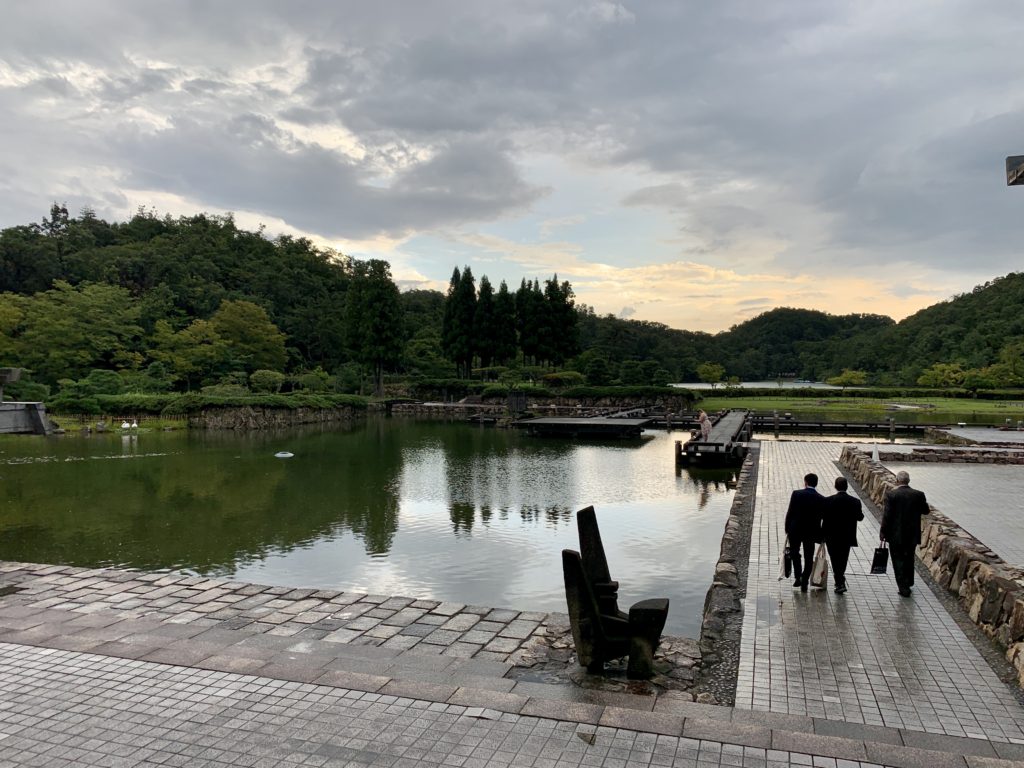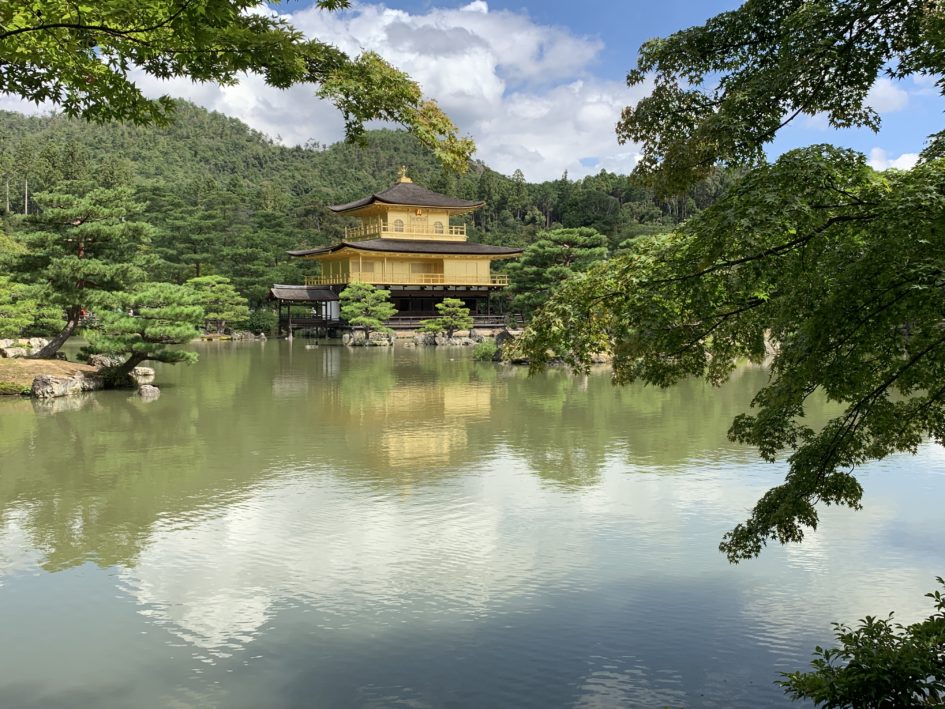In the first week of September 2019, more than 4500 museum professionals from 120 countries descended on Kyoto for the 25th General Conference of the International Council of Museums.
The opening remarks from ICOM President Suay Aksoy aimed to set the tone for the week. Highlighting big international challenges—species extinctions, climate change, natural disasters, political upheaval—she positioned museums as a force for positive change. Watching from the stage was His Imperial Highness Crown Prince Akishino, who later spoke of his own experience researching freshwater fish of South East Asia, drawing in part on specimens held in natural history museums.
Following a keynote from Kengo Kuma on his environmentally-inspired architectural practice, the theme of biodiversity continued in the first plenary, Curating Sustainable Futures Through Museums. As someone long interested in ideas of relationality and entanglement, I was intrigued by the use of the Japanese word ‘tsunagari’ (connection, link, or relationship) to refer to interconnected networks at a range of levels: cells, bodies, societies, and the planet.
But over the week there were some significant disconnects.
Though sustainability was a key theme, the conference itself had a huge environmental footprint. There was a seemingly-endless supply of plastic water bottles, thousands of plastic wrapped treats, and lunch in disposable packaging, all capped off with a fireworks display to end the opening reception.
More sustainable events are not easy, but they are possible, as the recent conference for the Australian Marine Sciences Association proved. If ICOM wants to fully commit to sustainable practice there are also opportunities for more online engagement with events (something MuseumNext is starting to explore) as a way of reducing the substantial emissions produced when 4,000 people fly to a conference. Alternatively, where there is still value in being physically co-located—and I believe there often is—delegates could be asked to contribute to carbon offset activities as part of the price of attendance.
The sustainability disconnect was symptomatic of a broader concern. A number of presentations (including the conference opening) seemed to conceive of museums as somehow distinct from the problems they are charged with tackling: ‘the world is in trouble; museums can help!’ But there are many issues within our own sector which were barely mentioned on the main stage. Our institutions have contributed to colonisation, and continue to reflect colonial narratives and power structures in our exhibitions, collections documentation, and relationships with source communities. Buildings, exhibition spaces, and research activities have been funded by mining and fossil fuel companies, big pharma, and deeply-problematic organisations like Koch Industries that actively support climate change denial.
Even the world’s first climate change museum at the University of Hong Kong (which was featured on the main stage in Kyoto), is branded the Jockey Club Museum of Climate Change, with funding coming from the organisation which holds a legal monopoly over horse racing, lotteries, and football betting. The Hong Kong Jockey Club is a non-profit which makes a substantial contribution to the city’s economy, but at what cost?
For me, the most striking example of this disconnect was Sebastião Selgardo’s keynote on 3 September 2019. Selgardo spoke about his work photographing the Brazilian Amazon forest and its inhabitants, presenting a film of these images called Amazonia. There is no doubting his technical mastery, capturing beautiful landscapes and atmospheric lighting in black and white images reminiscent of Ansel Adams. But his photos of Indigenous people—nameless, voiceless, often naked, sometimes decontextualized against a studio backdrop—recall a far more problematic tradition of colonisation and objectification; the fetishization of the ‘other’ (who Selgardo describes as ‘pure’) through an ethnographic lens for the benefit of a privileged audience. When combined with an emotive Heitor Villa-Lobos soundtrack, the result is a glossy product to tug at the heart strings. The standing ovation Amazonia received suggests it worked for many in the audience, but I left feeling deeply discomforted.
All of which is not to say that the whole week was problematic. Many of the smaller, parallel sessions, and the conversations I had with individuals, were productive, often interesting, and sometimes inspiring.
I spent much of the week with CIDOC, the International Committee for Museum Documentation, which has been around since 1950—one of the oldest working groups in ICOM. CIDOC is based on the idea that you cannot justifiably call your accumulation of things a ‘museum collection’ unless it is documented. Good metadata helps facilitate the work of registrars, curators, exhibition designers, conservators, and researchers, as well as now providing the source data for millions of online collection items.
We heard from Jan Behrendt on the need for more strategic approaches to digital strategy development, and Giovanni Cella on the development of a portal for the archives of science and technology in Milan, Italy. Emmanuelle Delmas-Glass and David Newbury spoke about the value of creating not just linked open data, but linked, open, usable data; and Kate Smith spoke about her work on thesauri and vocabularies at the David Livingstone Birthplace Museum. We heard about the GLAM sector in Brazil, made up of more than 6000 libraries, 3600 museums, and 1200 archives. Christina McGregor spoke about decolonising documentation at University College London, and Ryohei Nakatsu showed us a fascinating digital, interactive Rakuchu Rakugai-zu (traditional paintings showing the sights and sounds of Kyoto).
Jumping across to an ICME session (International Committee for Museums and Collections of Ethnography) it was wonderful to hear Christina Kreps’ talk “Staying with the Trouble”: Diversity and Universality. Drawing inspiration from Donna Haraway’s recent book, Staying with the Trouble: Making Kin in the Chthulucene, Kreps spoke about the need to live and make with diversity, including the need for ‘tentacular thinking,’ where we follow threads, find their tangles, and explore what connects (and disconnects) us. Through this, Kreps argues, we can start to challenge ethnocentrism and anthropocentrism, building our understanding of the ways in which we are in kinship with all things.
And so we come to the new museum definition proposed by ICOM. Unfortunately, I was unable to be there for the last day, so as I started my journey back to Australia I watched on Twitter as conference delegates debated the new definition for several hours. @roamingcurator provided a useful Twitter thread capturing some of the key comments from the floor, before a vote was finally taken to postpone any decisions on the new definition until further discussion and consultation has taken place.
Here is the proposed definition in its current form.
Museums are democratising, inclusive and polyphonic spaces for critical dialogue about the pasts and the futures. Acknowledging and addressing the conflicts and challenges of the present, they hold artefacts and specimens in trust for society, safeguard diverse memories for future generations and guarantee equal rights and equal access to heritage for all people.
Museums are not for profit. They are participatory and transparent, and work in active partnership with and for diverse communities to collect, preserve, research, interpret, exhibit, and enhance understandings of the world, aiming to contribute to human dignity and social justice, global equality and planetary wellbeing.
ICOM’s proposed museum definition
Personally, I believe that museums and other GLAM institutions can, and should, contribute to positive change in society. I believe in pursuing social justice rather than hiding behind institutional authority or misguided ideas about objectivity. Museums are not neutral, and should be participatory, transparent, and involved in active partnerships.
These are all fine aspirations, but do we do these things now? Do our governments and other funding bodies support these aims, or do many of us as individuals do this work despite rather than through the structures and limitations of our workplaces? And do our audiences see us this way? Do Aboriginal communities in the north of Australia see museums as guaranteeing equal rights and access? Do young Muslim women recently arrived in Germany see their local museums as polyphonic and diverse? Do African American school students in the American south see the museums in the centre of their city as acknowledging and addressing the conflicts and challenges of their present? Do people in mainland China see their museums as democratising?
In a recent episode of the podcast Museopunks exploring decolonisation, Nathan Sentance notes that, though many people working in museums are progressive, the institutions themselves are often conservative and slow to change. At the ICOM General Conference in Kyoto, I found the same. Individuals spoke about sustainability, diversity, decolonisation, and participation, and I had many conversations about these issues myself. Meanwhile, the conference as a whole produced enormous amounts of waste, and gave the main stage over to: an opening where 90% of the people on stage were men in suits; a panel on Asian Art Museums & Collections where four out of five participants didn’t work in Asia; a featured museum sponsored by gambling; and a standing ovation for a photographer whose work shows no more evidence of participation and active partnerships than is found in anthropological work from a century ago.
Practitioners and projects in museums are doing great work, and many individuals are actively pursuing many of the aspirations found in the new ICOM definition. But if that definition is, as per the OED, intended to be “a precise statement of the essential nature of a thing,” I look at the essential nature of ‘the museum’ and think we still have a long way to go. Claiming we are already there might make us feel good about our work, but we are letting our institutions, and our sector, off the hook.



Leave a Reply